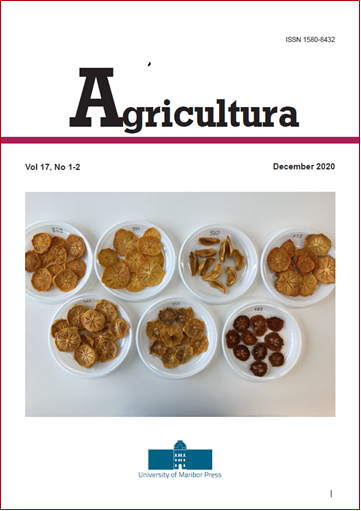Sensory Evaluation of Dry Persimmons of the Tipo (Diospyros kaki L. f.) Variety
Abstract
The study carried out at the Faculty of Agriculture and Life Sciences of the University of Maribor aimed to evaluate the attractiveness of dried persimmon fruit depending on the method of preparing the fruit for drying. The methods varied in terms of the ripeness of the fruit, the thickness and shape of the slices, the presence of seeds (in fertilised fruits) and the presence of peel. Sensory evaluation was performed by students and staff, using a hedonic scale, where evaluators evaluated the appearance (shape and colour) and taste (sugar-acid ratio, texture, tartness, presence of fruit peel, and general impression) of the fruit. Dried unfertilized persimmons, with the presence of peel, cut into 3 mm thick slices, were given the highest score for overall attractiveness. In terms of taste, unfertilised, peeled persimmon slices scored the highest. Considering all parameters, the results showed that unfertilised persimmons were more suitable for drying and that the presence of the peel was not a disturbing factor for consumers.
Downloads
Copyright (c) 2021 Andrej Vogrin, Petra Marko, Tatjana Unuk

This work is licensed under a Creative Commons Attribution-NonCommercial-NoDerivatives 4.0 International License.

